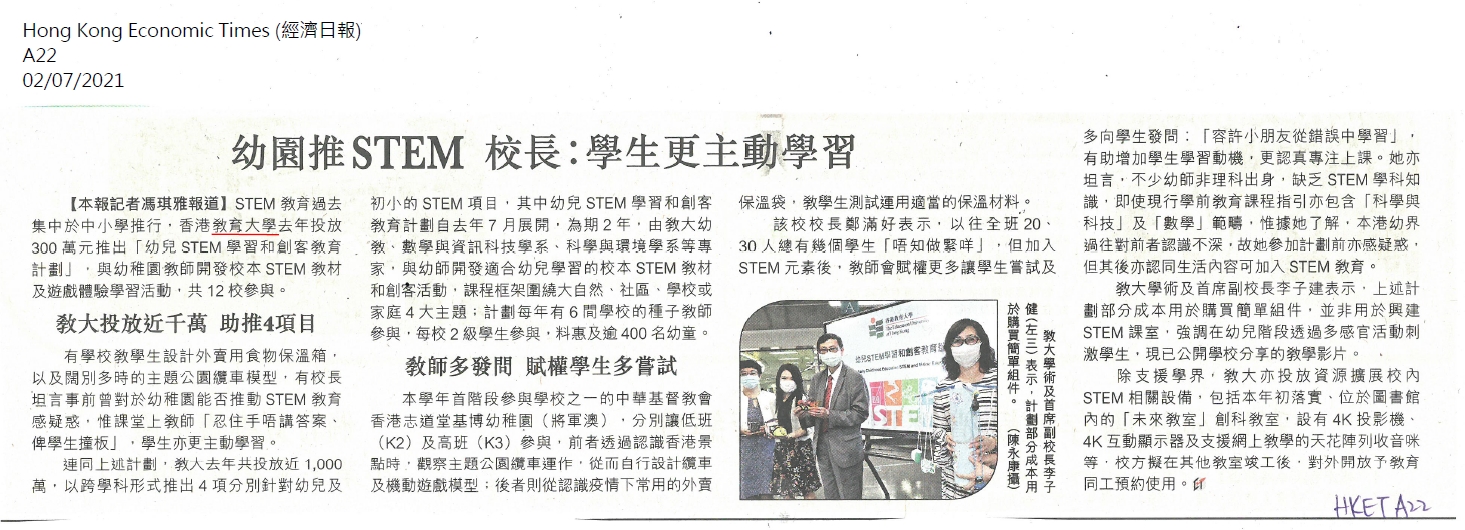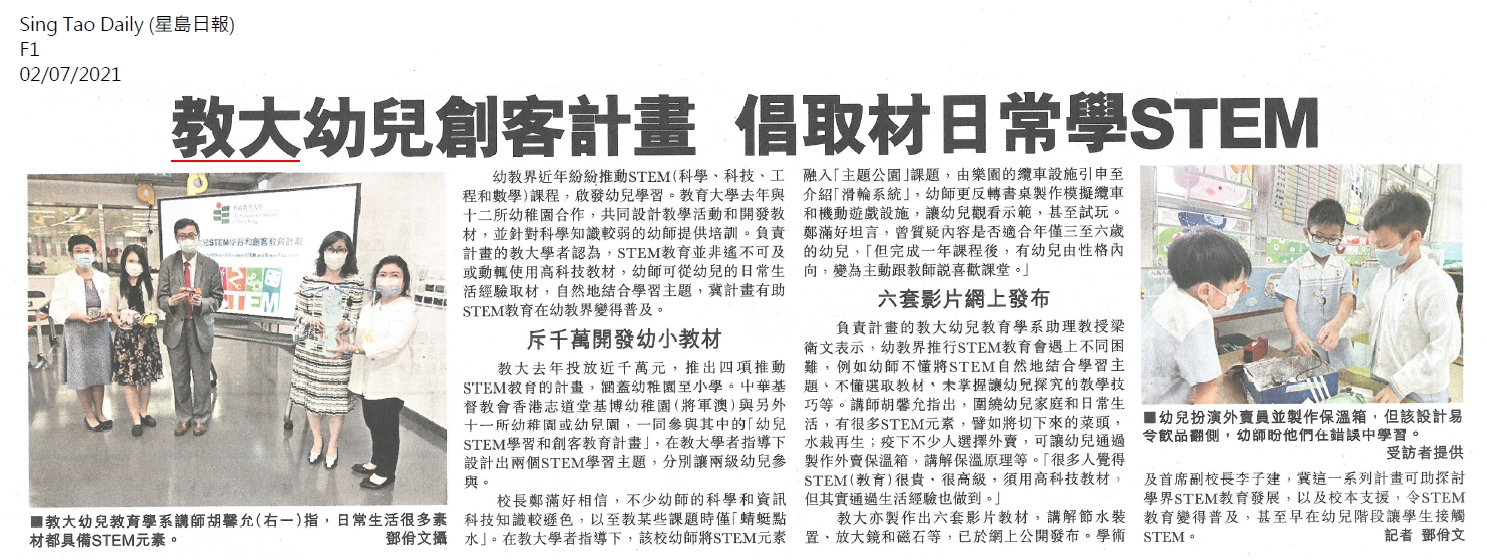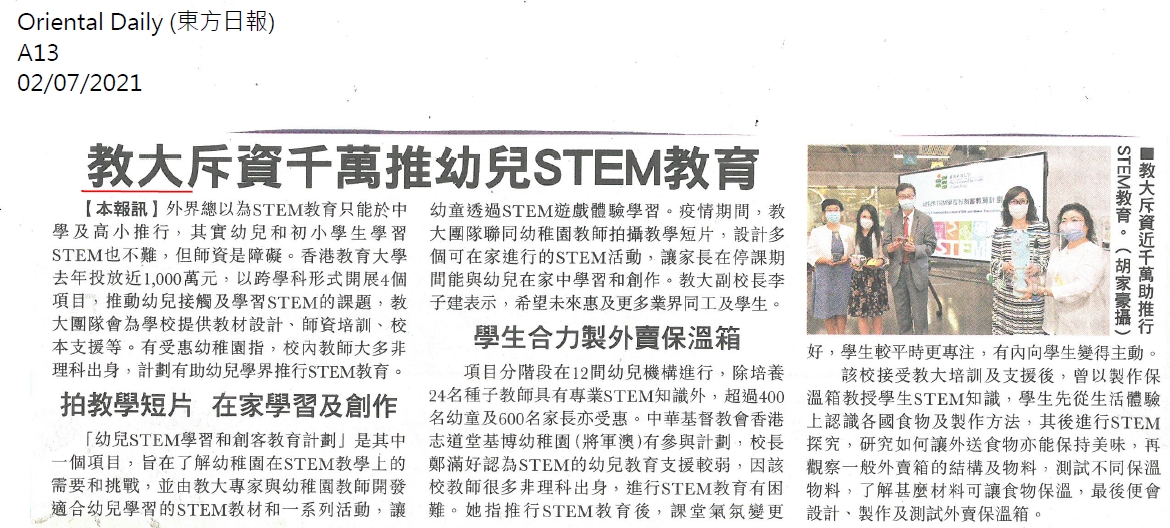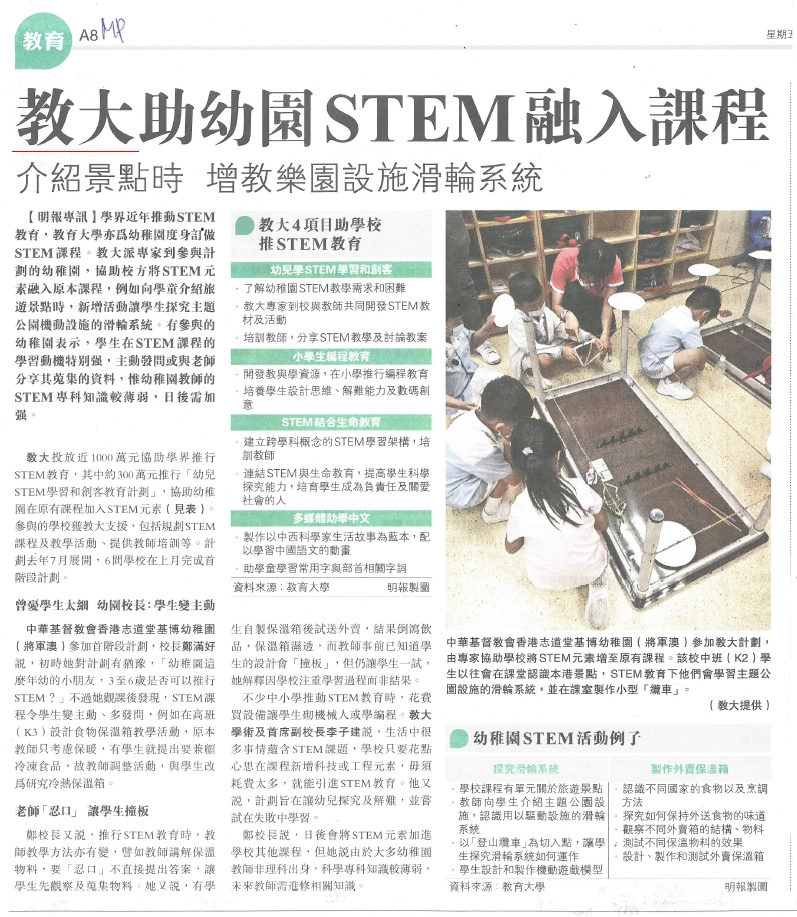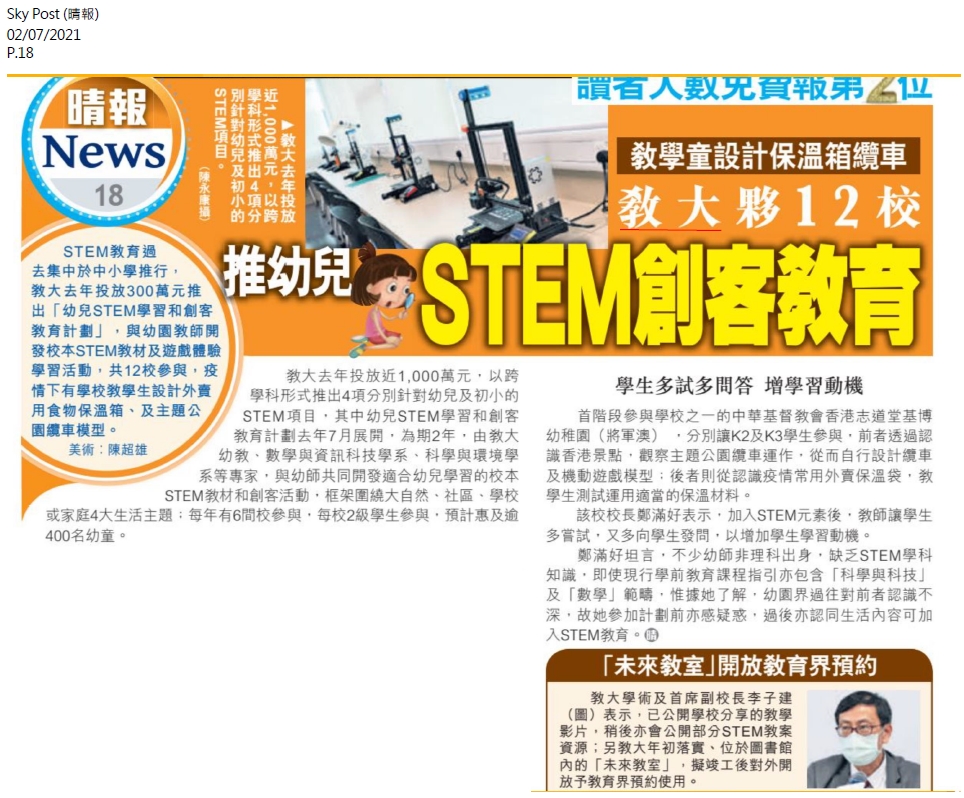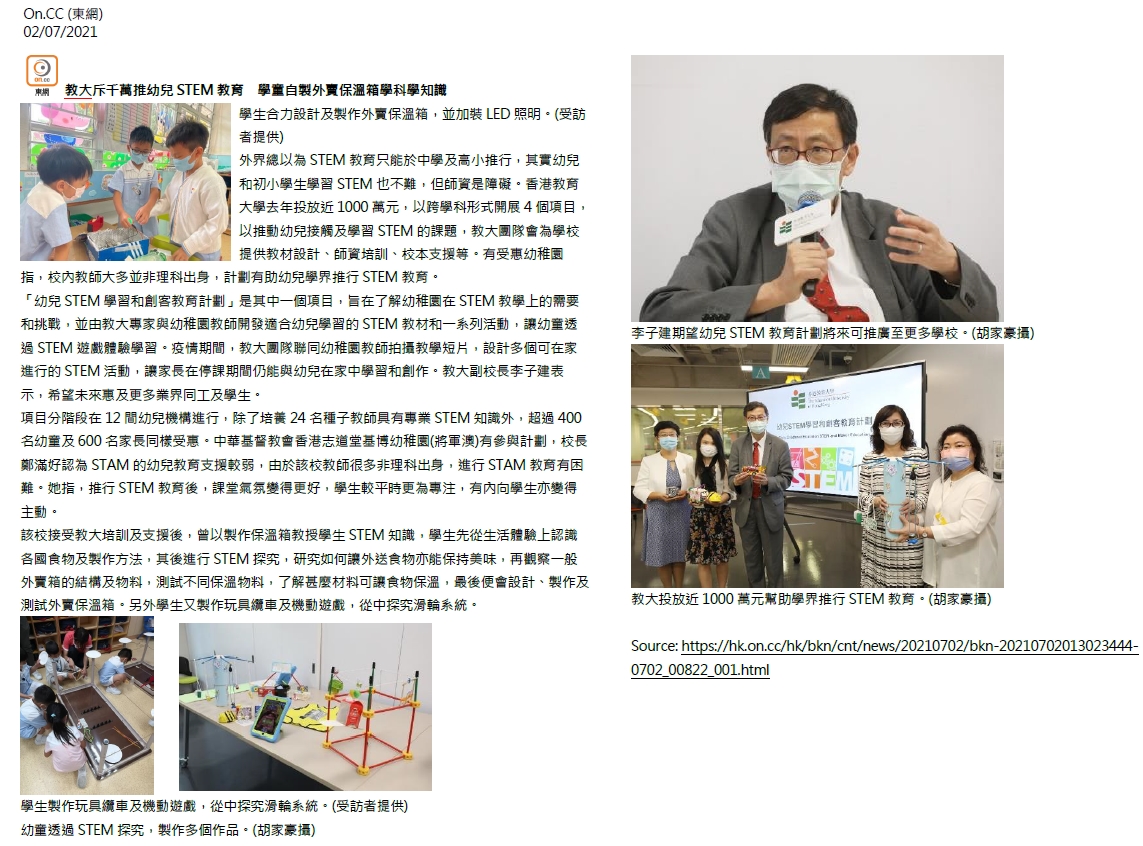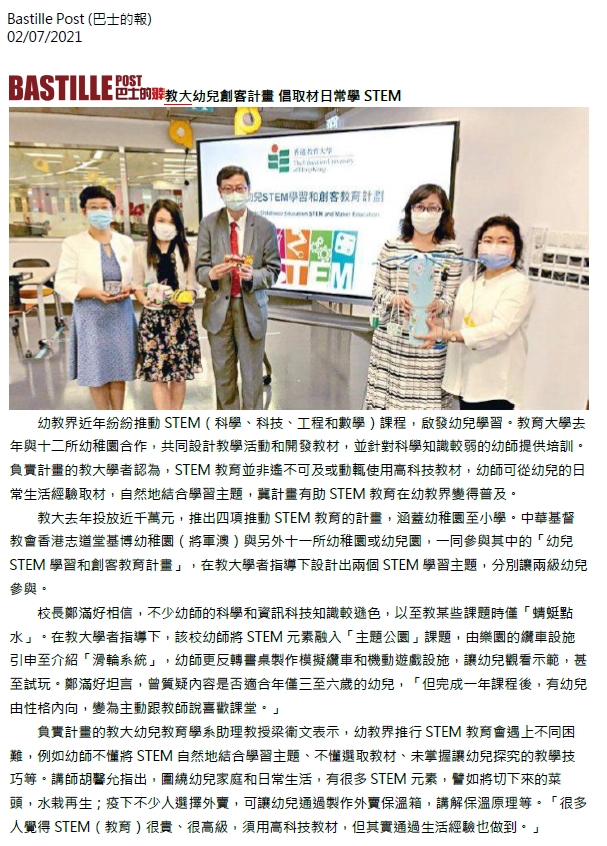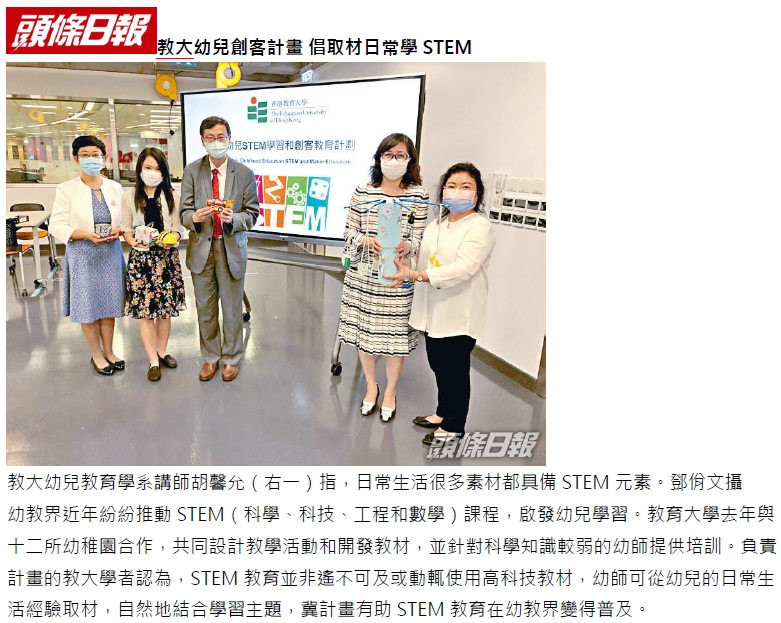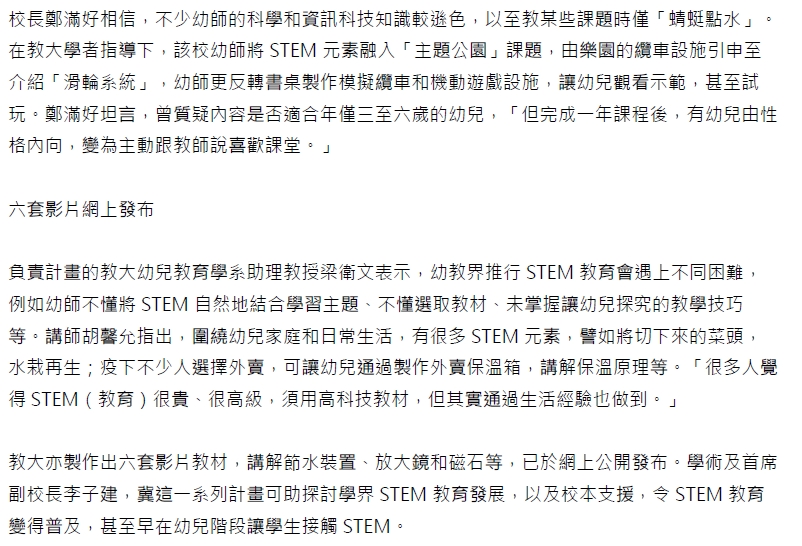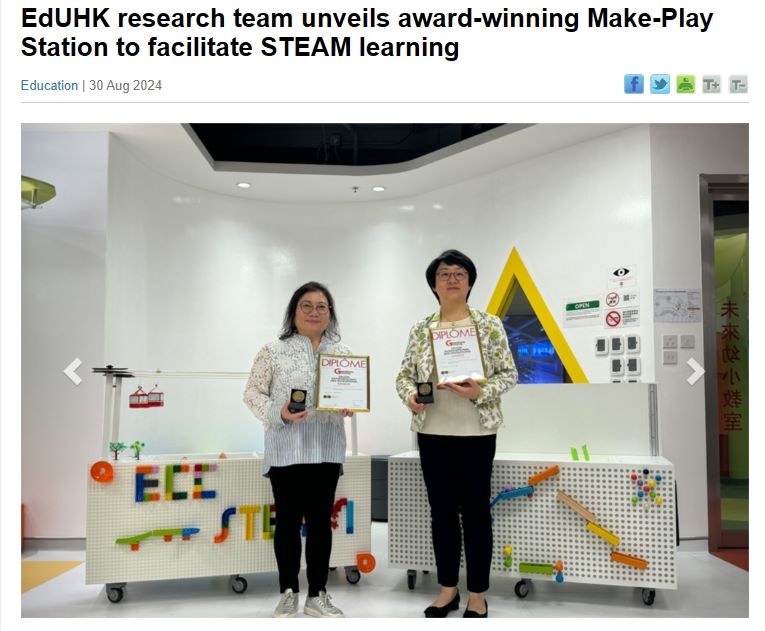
Therefore, they sought to create a product that could address this issue and enhance teaching effectiveness.
Another challenge they aim to tackle is the insufficient resources for STEAM teaching in some kindergartens. To address this, 20 sets of meticulously curated toolkits are integrated into the twin Stations, providing teachers with the necessary tools to support their curriculum and offer hands-on learning experiences for children in a thematic setting or role-play. This, in turn, aims to ignite their passion to explore various subject areas.
For example, the science toolkits include sets of small measuring cylinders, enabling children to grasp concepts like 100 millimeters or 500 millimeters more easily by visualizing abstract daily life concepts. Conducting small experiments independently through hands-on experience helps satisfy their curiosity and stimulate their creativity, thereby making learning more fun and engaging.
Receiving well-deserved recognition
The team’s dedicated efforts have paid off, as the Station has garnered significant recognition at international competitions, earning several accolades, including the Bronze Award at the 49th International Exhibition of Inventions Geneva and a Silver Medal at the Silicon Valley International Invention Festival.
Sharing her feelings about their win, Dr Hu says, “We were thrilled to win the award amidst such rigorous competition with so many talented participants. I believe our concept of fostering ‘little inventors’ at a young age resonated with the judges. The children are truly engaged with the Make-Play Station, learning through play and experimentation.”
Dr Leung adds, “It took our team about a year to design and develop the Station, and winning this award has given us a huge boost of confidence and motivation to continue promoting it!”
Future applications and classroom integration
When The Standard inquired about how educators can seamlessly integrate the station into their classroom learning, Dr Hu replies, “We provide training for teachers on how best to utilize the Station to engage children in learning and integrate it with their school-based curricula.”Looking ahead, the team will continue to use pilot data and rigorous research to optimize children’s engagement and foster their autonomy. They also aim to collaborate with public institutions and local partners to introduce the Station in public spaces, broadening unique educational experiences.
As STEAM learning gains prominence in classrooms today, an early childhood research team from The Education University of Hong Kong (EdUHK) has developed a multi-functional ‘Make-Play Station’ specifically designed for children aged 3 to 8. This innovative learning tool encourages hands-on exploration and knowledge acquisition. Recognized by international education experts, the interactive multifunctional play station has garnered several awards, demonstrating the team’s commitment to advancing early childhood education.
The project team consists of members including Dr Hu Xinyun, Dr Leung Wai Man Vivienne, and commercial partners Mr Yu Wai Kwok and Mr Chung Man Fai. The Standard had the privilege to speak with Dr Hu and Dr Leung to learn more about their invention.
Features and advantages
The ‘Make-Play Station’ boasts several key features designed to address common challenges faced by educators.
The first distinctive feature is its mobility. Equipped with wheels, the play station allows teachers to easily move the station around the classroom, whether indoors or outdoors, to facilitate their teaching either for a group of kids or individual.
Another special feature is its space-efficient and flexible design. Despite its compact size, the all-in-one Make-Play Station offers ample storage space for educators to store and utilize a wide range of STEAM materials to achieve optimal effectiveness.“
We hope that our design can overcome space and resource constraints with this versatile and compact learning station. STEAM learning toolkits are provided and stored at the station, allowing teachers to incorporate them into their curriculum for creative, exploratory, and maker play,” shares Dr Leung.
Dr Hu and Dr Leung explain that the all-in-one design was inspired by the common challenge of limited classroom space faced by teachers in Hong Kong.
